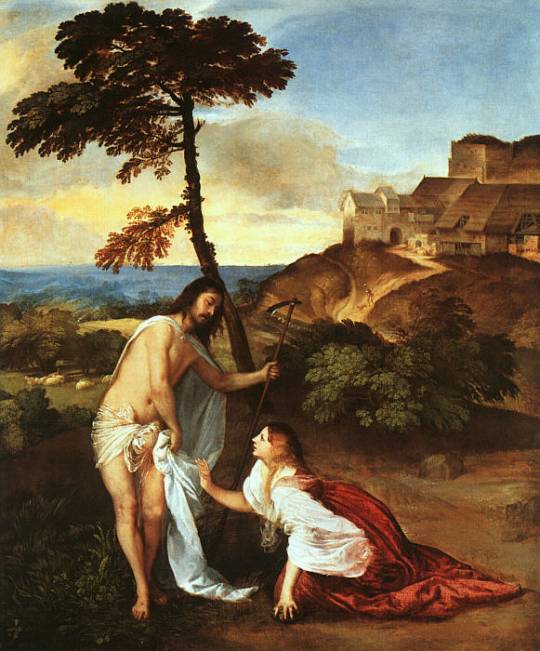On that first Easter morn amidst her copious tears and anguish of not having found her dearest Lord, Mary Magdalene perceived what she thought was the gardener. He could help, thought Mary, and so she asked that question which we all know so well, "If you have taken him away, please tell me where you have laid him?" As Lancelot Andrewes preached in his 1620 Paschal sermon:
Not only not know Him, but mis-knew Him, took Him for the gardener. Tears will dim the sight, and it was not yet scarce day, and she seeing one, and not knowing what any one should make in the ground so early but he who dressed it, she might well mistake.
Over the years Mary has sometimes been chided for not recognising her Lord. However our Jacobean Court preacher suggests that there was something about our Lord's appearance that lent itself to Mary's thought.
But it was more than so; her eyes were not holden only that she did not know Him, but over and beside He did appear in some such shape as might resemble the gardener for whom she took Him.
In fact it was indeed fitting that Mary should respond this way, stated Andrewes.
Proper enough it was, it fitted well the time and place, this person. The time, it was the spring; the place, it was the garden: that place is most in request at that time, for that place and time a gardener doth well.
Andrewes of course was recalling an Easter sermon of the great Gregory a thousand years before. In this sermon he commended Mary Magdalene's perception for seeing the Risen Lord as a gardener.
She did not mistake in taking Him for a gardener; though she might seem to err in some sense, yet in some other she was in the right. For in a sense, and a good sense, Christ may well be said to be a gardener, and indeed is one. For our rule is, Christ as He appears, so He is ever; no false semblant in Him.
This most beautiful sermon of Andrewes continues by illustrating the ways in which according to Gregory the Lord is our Gardener. Firstly He is the planter of "the fairest garden that ever was, Paradise. He was the gardener, it was of His planting. So, a gardener." Secondly, ever since then He "makes all our gardens green, sends us yearly the spring, and all the herbs and flowers we then gather; and neither Paul with his planting, nor Apollos with his watering, could do any good without Him. So a gardener in that sense.". Thirdly, He is the gardener of "our souls too, and makes them, as the prophet [Jeremiah] says, like 'a well-watered garden;' weeds out of them whatsoever is noisome or unsavoury, sows and plants them with true roots and seeds of righteousness, waters them with the dew of His grace, and makes them bring forth fruit to eternal life."
Was He so this day alone? No, but this profession of His, this day begun, He will follow to the end. For He it is That by virtue of this morning's act shall garden our bodies too, turn all our graves into garden plots; yea, will one day turn land and sea and all into a great garden, and so husband them as will in due time bring forth live bodies, even all our bodies alive again.


